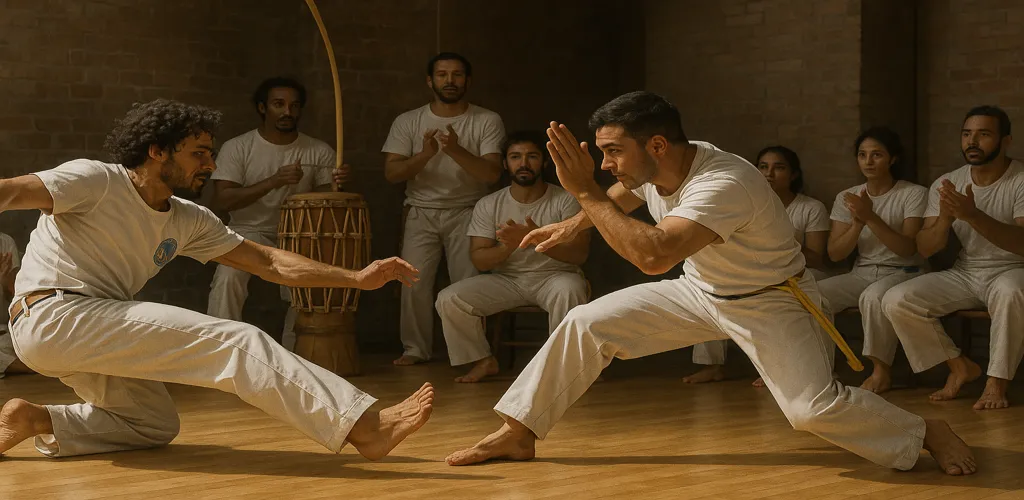Carioca

Capoeira Carioca was one of the earliest documented forms of capoeira practiced in 19th-century Rio de Janeiro, known for its aggressive stance, street influence, and links to criminalized Afro-Brazilian identity. Unlike the ritualistic Angola or the stylized Regional forms, Carioca was a raw and pragmatic fighting style used for survival in urban environments. Its techniques often included headbutts, sweeps, and sharp kicks aimed at disabling opponents quickly. Though outlawed and suppressed during its time, Capoeira Carioca laid the groundwork for many modern interpretations of the art. Today, it is studied by historians and martial artists seeking to understand capoeira’s origins and urban evolution.
Carioca Essentials
About Carioca
This section outlines Capoeira Carioca as a historically fierce and utilitarian style that emerged in Rio’s streets. Learn how it differed from other capoeira traditions in purpose and execution.
Carioca History
Dive into the violent, politically charged backdrop of 19th-century Rio, where Capoeira Carioca developed among enslaved and marginalized communities. This section traces its rise, repression, and legacy.
Philosophy & Approach
Carioca was not about ritual—it was about survival. This section explores the practical mindset behind its street application, rapid counters, and raw self-defense focus.
Techniques & Style
Capoeira Carioca employed fast, aggressive moves—headbutts, low kicks, deceptive dodges, and even blades. Here you’ll find technical breakdowns of its efficient and direct style.
Traditions & Etiquette
Though less formal than other capoeira branches, Carioca had its own codes of honor, street rituals, and signs used among practitioners. This section reconstructs those elements based on historical accounts.
Uniform & Symbols
Practiced before formal uniforms existed, Carioca fighters wore everyday clothes and often concealed blades or tools. Learn how appearance reflected identity and readiness in the urban landscape.
Weapons
Unlike modern capoeira, Carioca often incorporated knives, razors, or makeshift weapons. This section explains how these tools were used within the style’s combat context.
Ranking System
Capoeira Carioca had no ranking belts or cords—respect was earned in the street through real encounters. This section outlines how reputation, skill, and alliances shaped hierarchy.
Carioca Glossary
Discover period-specific slang, technique names, and street terms tied to Capoeira Carioca. This glossary reveals how language reflected the art’s urban roots.
Notable Figures
Meet historical characters such as Nascimento Grande and Manduca da Praia—figures who defined Carioca capoeira through legend and police reports. Their stories show the blurred line between fighter and outlaw.
Branches & Organizations
While not institutionalized like other styles, Carioca’s legacy lives on in research circles and reconstruction efforts. This section introduces modern groups seeking to revive its methods.
Competitive Format
Capoeira Carioca wasn’t designed for sport—but for real street survival. Here we explore how its techniques are adapted today in controlled settings and historical reenactments.

